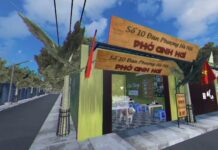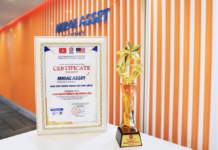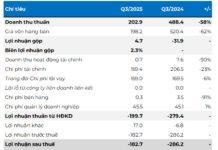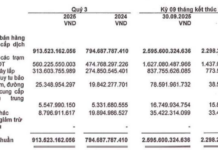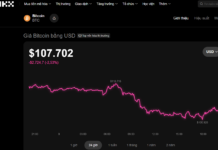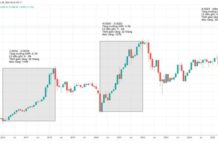The automotive industry in Southeast Asia is witnessing fierce competition among nations, with Vietnam and Thailand emerging as key contenders. Thailand has long been dubbed the “Detroit of Southeast Asia” due to its robust manufacturing capabilities and leading export status in the region. Meanwhile, Vietnam, despite its later entry, has demonstrated impressive growth rates.
Closing the Gap
In 2024, Vietnam’s automotive market recorded significant growth, with total sales reaching 494,310 vehicles, including both domestically assembled and imported cars. Specifically, domestically produced and assembled vehicles accounted for 50%-60% of sales, with major brands like VinFast, Toyota, Hyundai (TC Motor), and Thaco leading the way. Imported vehicles made up the remainder, with Thailand topping the list at 45.35% of total imports into Vietnam, followed by Indonesia (35.85%).
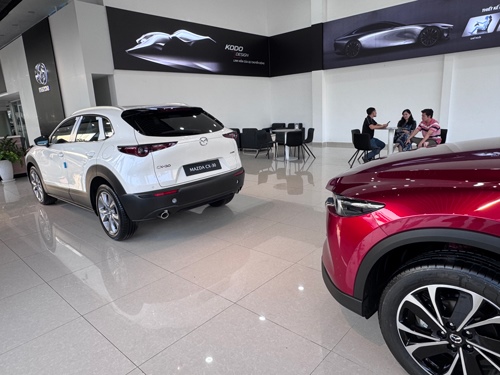
Vietnam’s car consumption shows the best growth in the region |
A notable trend is the surge in electric vehicles (EVs), led by VinFast, which delivered 87,000 units in 2024, pushing Vietnam’s EV market share to 15%, the second-highest in Southeast Asia. Additionally, Chinese brands like BYD, Geely, and Haval have entered the fray, intensifying competition with their affordable pricing and advanced technology.
In contrast, Thailand is facing significant challenges. Despite achieving sales of 572,000 vehicles in 2024, this figure represents a 26% decline compared to the 775,000 units sold in 2023, dropping Thailand to third place in Southeast Asia, behind Indonesia (865,000 units) and Malaysia (816,000 units). Thailand’s automotive production reached 1.47 million units but also decreased by 20% year-on-year.
According to the Federation of Thai Industries (FTI), the sector’s downturn is attributed to tighter lending conditions, high household debt, and sluggish GDP growth (2.5% in 2024). Major automakers like Subaru and Suzuki have closed factories, while Honda plans to shut down a facility in Ayutthaya province.
2024 marked a turning point as the sales gap between Vietnam and Thailand narrowed to just 78,000 units, down from over 370,000 in 2023. Vietnam achieved a positive growth rate of 22%, while Thailand experienced a sharp decline of 26%, highlighting starkly contrasting trends.
In terms of product structure, Vietnam leads the region in electric vehicles, thanks to VinFast. Meanwhile, Thailand, despite its ambitious goal of 30% EV adoption by 2030, has yet to make significant strides in domestic consumption.
Boosting Investment in Supporting Industries
Experts predict Vietnam’s automotive market will grow by 8%-10% in 2025, reaching approximately 540,000-550,000 units, driven by reduced registration fees and economic recovery. VinFast aims to sell 200,000 electric vehicles this year, contributing to a total domestic sales target of over 600,000 units.
Looking ahead, the Ministry of Industry and Trade’s draft strategy sets a target of 1-1.1 million vehicles sold annually by 2030, with an average growth rate of 14%-16%. Electric and hybrid vehicles are expected to account for around 350,000 units, reflecting Vietnam’s ambitious vision to become a new automotive powerhouse in the region.
Conversely, Thailand’s domestic market is unlikely to see significant growth due to saturation. According to Assoc. Prof. Đàm Hoàng Phúc (Hanoi University of Science and Technology), the demand for second cars in Thailand is not urgent, whereas Vietnam still has substantial room for growth, driven by rising incomes, improved infrastructure (including new highways), and high first-time car ownership demand.
The rise of VinFast has been pivotal in narrowing the gap with Thailand. From 34,800 units sold in 2023, VinFast surged to 87,000 units in 2024 (a nearly 150% increase), and its 200,000-unit target for 2025 is well within reach.
Government support, such as a 100% exemption on registration fees for electric vehicles and reduced fees for gasoline cars, is further incentivizing consumers. Meanwhile, Thailand faces internal economic challenges, leading to reduced purchasing power and declining investment from major automakers. If Vietnam leverages these factors effectively, surpassing Thailand within 5-10 years is not unrealistic.
However, Thailand maintains a significant advantage with its well-developed supporting industries (over 60% localization), lower production costs, and its position as the region’s automotive export hub. Major players like Tesla and Chinese automakers continue to invest heavily, sustaining Thailand’s production capabilities. In contrast, Vietnam’s supporting industries are only at 7%-10%, far below the 40%-45% target for 2025. Additionally, high taxes (40%-55% of vehicle prices) make cars in Vietnam twice as expensive as in Thailand and Indonesia, posing a significant competitive barrier.
To surpass Thailand, Vietnam must address these challenges. Assoc. Prof. Đỗ Văn Dũng (Ho Chi Minh City University of Technology and Education) emphasizes that Thailand’s advantages in infrastructure and per capita income require Vietnam to invest more heavily in supporting industries and implement tax reforms to sustain automotive growth.
According to Đào Công Quyết, representative of the Vietnam Automobile Manufacturers’ Association (VAMA), reducing vehicle prices would significantly boost demand. This has been demonstrated in Malaysia, where local brand Perodua sold over 380,000 units in 2024, capturing nearly 50% of the market, thanks to its affordable pricing.
|
Opportunities for Improvement With its vast potential, the rise of VinFast, and supportive policies, experts and businesses are confident that Vietnam will rise strongly to compete with Thailand. While overtaking this automotive powerhouse in the short term remains challenging, by enhancing supporting industries, reducing vehicle costs, and maximizing market potential, Vietnam can significantly improve its regional standing and potentially surpass Thailand in the coming decade. |
Article and photo: Nguyễn Hải
– 08:48 09/03/2025
The Haunting Specter of Excess: Will China’s Electric Vehicles Be a Bargain Bonanza in Vietnam?
The Chinese electric vehicle industry is grappling with a production surplus crisis, prompting manufacturers to aggressively target the Vietnamese market with competitively priced offerings. However, entrenched perceptions about quality, coupled with aftersales service challenges and market stability concerns, cast a long shadow over the prospects of these vehicles gaining a strong foothold in Vietnam.
Hyundai Models on Sale: Massive Discounts to Make Way for Newer Versions
The Hyundai range, including the Santa Fe, Tucson, and Palisade, is now available with enticing discounts and accessory packages from select dealers. These offers provide an excellent opportunity for customers to experience the renowned quality and performance of Hyundai vehicles at even more attractive prices. With these deals, Hyundai is making a strong statement about its commitment to delivering value and an exceptional ownership experience.





